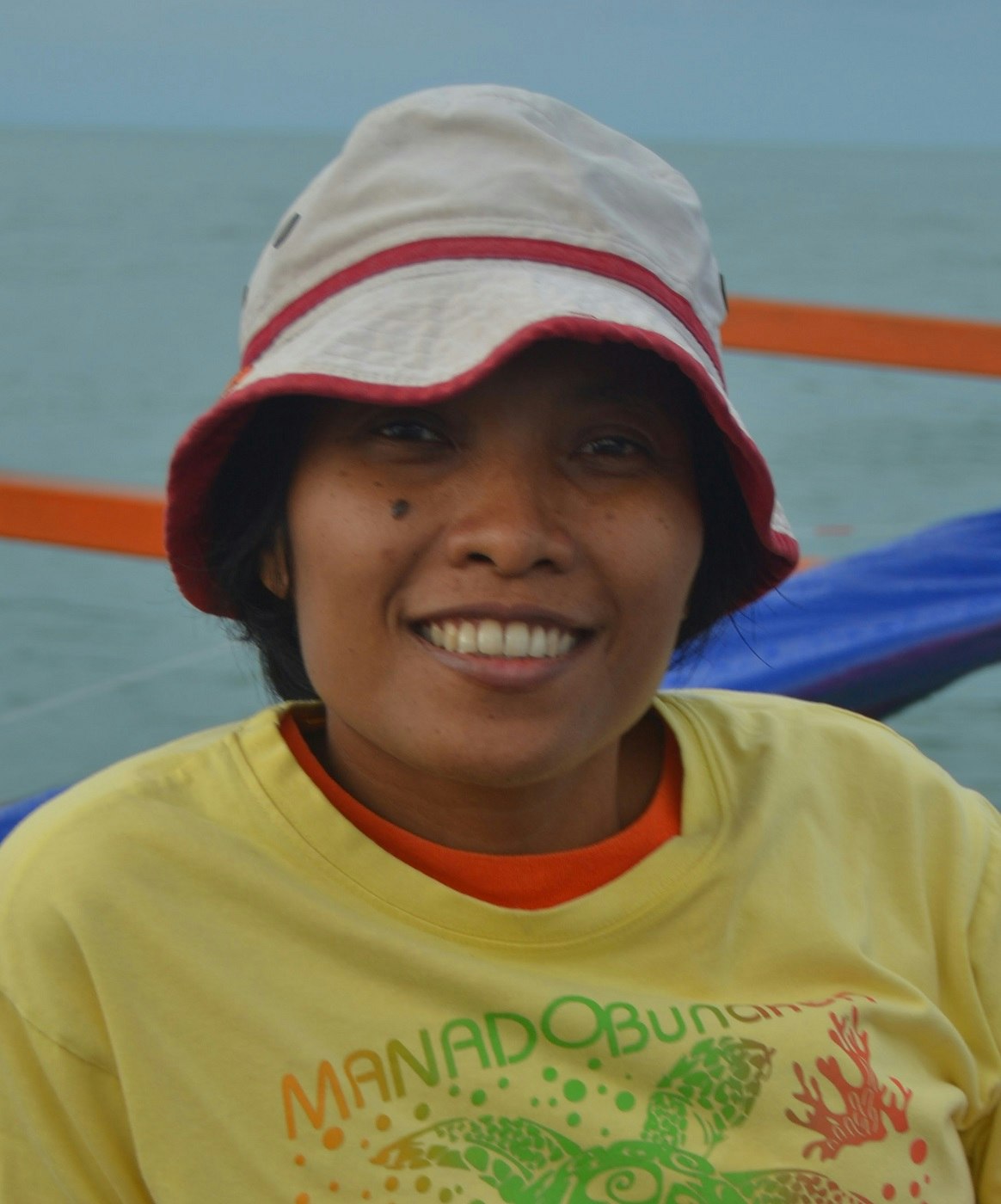Winner of the Whitley Award donated The Shears Foundation
A vital stronghold
Jamursba Medi and Wermon beaches in the Bird’s Head Seascape of West Papua host the largest remaining nesting aggregation of leatherback turtles in the Pacific. Although leatherbacks are no longer exploited on these beaches, low hatchling success has hindered the recovery of this critically endangered population and poaching still occurs in other areas.

Protection amidst poverty
Local communities legally own these beaches, and the success of efforts to reverse leatherback decline ultimately lies in gaining their support. However communities here live in extreme poverty, which has undermined their ability to support marine turtle conservation. Elsewhere in the region, a lack of enforcement enables the sale of leatherback meat and eggs to persist.

Part of the community
Fitryanti Pakiding is a researcher and lecturer with the State University of Papua. She leads a community programme aimed at working towards ‘Conservation Villages’, where biodiversity conservation goes hand in hand with improving local peoples’ quality of life.

Fitry’s ambitious project aims to:
- Empower communities to become guardians of leatherbacks and their habitat, whilst increasing local livelihood opportunities.
- Strengthen enforcement practicesto prevent the poaching of turtles and their eggs.
- Raise awareness of turtle conservation among young people and ensure government decisions are aligned with conservation goals.
Why it matters:
- The Pacific population of leatherback turtles is critically endangered.
- Their evolutionary roots can be traced back over 100 million years.
- Jamursba Medi and Wermon beaches support 75% of annual leatherback nesting in the region.
“When we provide communities with activities that benefit them, they show enthusiasm towards our project.”
PROJECT UPDATES
Fitry is working in a remote area, across multiple sites where local communities are living in high levels of poverty and conservation work is relatively new. Support from WFN has enabled Fitry to make promising progress in getting people on board with marine turtle conservation and has achieved the following:
- The project developed a successful turtle monitoring programme that has saved approximately 26,000 hatchlings from predation and nest disturbance. In Jamursba Medi, 86 leatherbacks laid a total of 539 nests, with an average of 80 eggs per nest. In addition, the team protected approximately 23% of nests laid in Wembrak, 47% of nests laid in Batu Rumah, and 19% of nests laid in Warmamedi with hatching successes respectively of 34%; 50% and 82%.
- Information about marine turtles was provided to people in 11 coastal communities where turtle meat and eggs are typically harvested for sale. A law enforcement workshop was also held with local stakeholders including 5 speakers who represented relevant divisions of the Tambrauw Regency government, local communities, WWF-Indonesia, and Lembaga Peningkatan Pelayanan Publik. Some communities have since gained permission from local government to put up signs that prohibit harvesting turtles and turtle eggs, and some have asked for assistance to organize small anti-poaching groups to patrol the beach.
- Improved the livelihoods and quality of life for community members by providing training, in collaboration with the Forestry, Outreach and Horticultural Divisions, in the following topics: organic vegetable farming techniques; improved chicken farming techniques; processing agricultural products into jams, flours, cakes and cookies; simple book-keeping; and reading, writing and maths skills for school children. All of these things help to gain support for conservation from local communities.
- The project has also developed awareness of marine turtle and environmental issues through: Turtle Camps for children, outreach to schools benefitting 254 kids and through posters about marine turtle conservation.
2024 CONTINUATION FUNDING
A sustainable future for Leatherback Turtles in Papua’s Bird’s Head peninsula
Indonesia
£100,000 over 2 years
Bird’s Head Peninsula in Papua, Indonesia, is home to some of the last strongholds for Pacific leatherback turtles – one of the world’s largest and most threatened species of marine turtle. Around 75% of annual leatherback nesting activity takes place at Jeen Womom Coastal Park Marine Protected Area (MPA), where 2014 Whitley Award winner Fitryanti Pakiding and her team from LPPM UNIPA are working alongside local communities to protect this critical nesting site.
Fitry and her team’s efforts have helped safeguard between 1,000 and 1,400 leatherback nests annually, releasing tens of thousands of hatchlings back into the ocean. Partnering with local residents, the team uses innovative nest protection techniques in the face of climate change — such as relocating nests threatened by high sand temperatures or tidal surges — to improve hatchling survival rates. Additionally, they help provide basic education for over 100 local students annually, as well as creating sustainable income opportunities for local people, including the production of coconut oil and traditional Papuan crafts to reduce the need to resort to nest poaching to meet basic needs.
Using Continuation Funding, Fitry and her team will continue and expand their work to protect Papua’s leatherback turtles by conserving habitats and benefiting local communities through empowerment, outreach, and partnerships – addressing the dual threats of climate change and human impact on the region’s precious marine ecosystems.
Through expanding nest protection efforts, they aim to safeguard 600 – 800 leatherback nests per year from high sand temperatures and inundation, while establishing increased access to nesting sites via a new ferry route. Fitry also hopes to reduce incidences of nest poaching and marine debris by raising awareness of marine turtle conservation among passengers of the Sabuk Nusantara ferry, which now stops at remote villages. Against mounting threats, Fitry and her team are adapting their approach to secure a sustainable future for the species.
Image credits (main image and diving): Mark Erdmann



